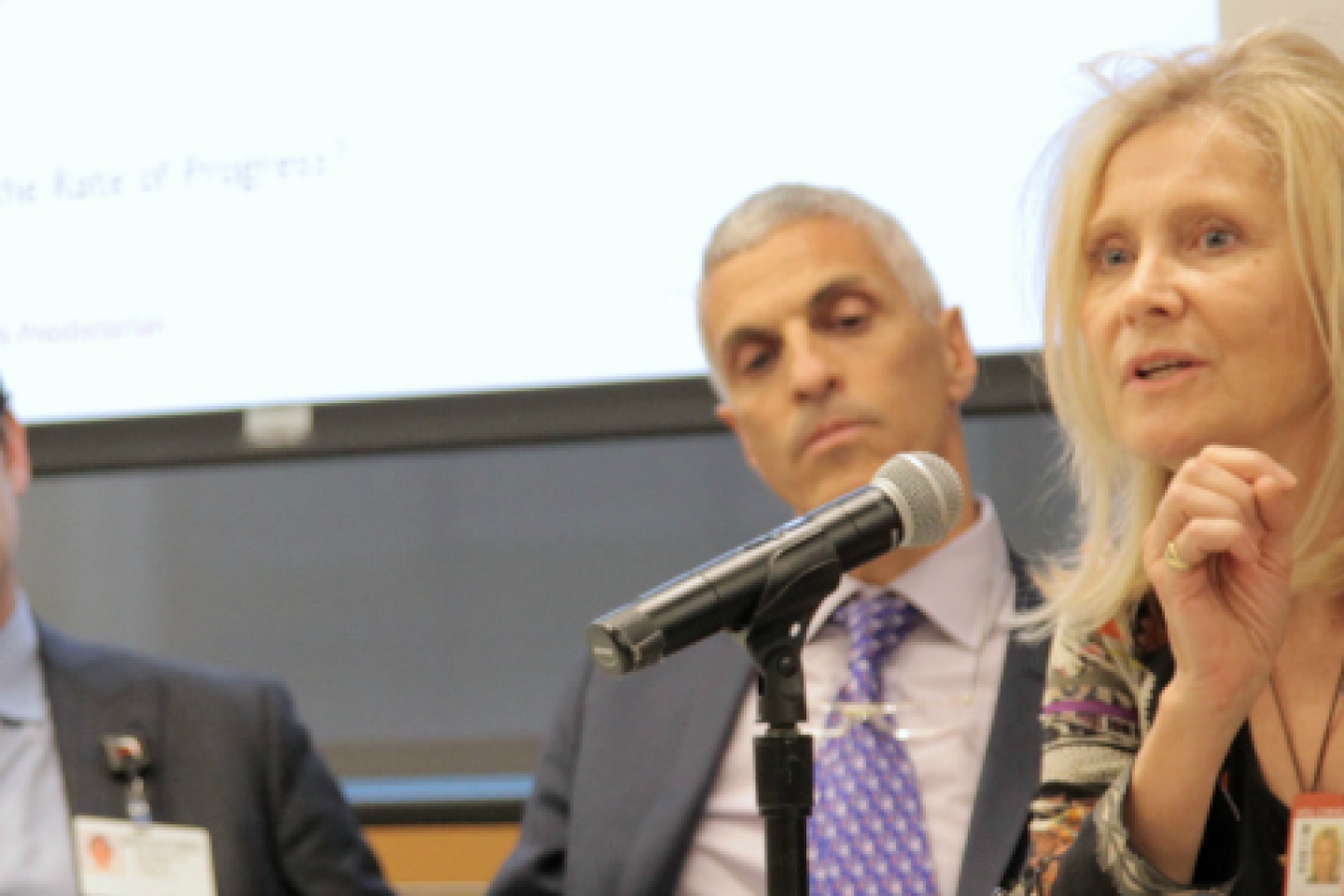
In many ways, it’s a science success story: an 8-year-old boy with a rare form of brain cancer is treated by one of the world’s leading experts in the disease, who collaborates with a pioneering precision medicine institute to sequence his tumor and create a first-of-its-kind “organoid” replica in the lab, allowing for further analysis and treatment testing without risk of harm to the child.
Upon analysis, the physician-scientist discovers a mutation previously not known to be linked to that type of cancer — and it happens to be in the protein that his colleague has spent a career studying. He contacts the colleague to ask if there is a drug to target the protein, and it arrives the next day. Applied to the organoid, the drug effectively kills 80-90 percent of the diseased cells.
If only the story ended there. Unfortunately, although the drug has been approved by the FDA, it cannot be used on the young patient because it has never been tested in children, and the pharmaceutical company controlling the drug is not willing to take the risk.
“We now start the gymnastics of trying to get permission from the FDA based on compassionate use,” said Jeffrey Greenfield, M.D., Ph.D. “We’ve done it before, and it takes anywhere from 3-6 months. This boy doesn’t have 3-6 months.”
Greenfield, a neurosurgeon at Weill Cornell Medicine & NewYork-Presbyterian, shared the anecdote at a special event held at Weill Cornell Medicine on June 29, one of 270 across the United States convened by Vice-President Joe Biden in tandem with a national summit at Howard University in Washington, DC.
Biden invited regional participants to discuss the goals of the “Cancer Moonshot” mission, announced in January by President Barack Obama as a way to accelerate cancer research, foster data sharing and collaboration, and improve patient access to care — all on a five-year timeline.
“The promise of precision medicine, which is enormous and which we have all bought into, doesn’t deliver in this case,” Greenfield said. “We’ve done all the work that we’ve promised to do, and we still have hurdles. The science is great, the medicine is great, but we’ve got to figure out a way to bridge the chasm between academia, pharma and clinic.”
Greenfield was joined at the event by more than a dozen other distinguished researchers and physicians, as well as a standing-room only crowd of around 100.
Participants heard that in many ways, the future of medicine is already here. Silvia Formenti, M.D., discussed how she uses radiation therapy to turn patients’ own tumors into internal “vaccines,” and Ching Tung, Ph.D., director of the Molecular Imaging Innovations Institute described new ways of “seeing” cancer.
Neurosurgeon Mark Souweidane, M.D., spoke about the importance of developing new forms of drug delivery and working with industry to be able to integrate research and technology into the operating room. “These are ways we can use novel non-invasive technologies that will put us as surgeons out of business, unfortunately, but will help heal the world,” Kaplitt said.
Gail Roboz, M.D., director of the Weill Cornell Medicine Leukemia Program, described immunotherapy, and in particular the use of CAR-T cells as an emerging therapy.
“The idea isn’t new, “Roboz said. “What’s new is that we can actually do it, we are able to finally do things that were Jetsons level before.”
“In 2016, we are at an amazing inflection point in cancer therapy,” added neurosurgeon Rohan Ramakrishna, M.D. “It’s one thing to say you want to accomplish big change in five years, it’s another to be able to do that.”
But he added that the time it takes to get discoveries from bench to bedside is still too long. We need to innovate, Ramakrishna said, and we need to incentivize high-risk research.
Ramakrishna and Greenfield said we also need to put greater value on the role of physician-scientist, and that the time of all physicians should be better protected so that they spend less time on record-keeping and grant-writing, and more time in the lab and clinic. Tung added that other scientists working in the background — the chemists, computational biologists, and engineers creating some of the new tools that are enabling such progress — should also be supported.
Biden joined the event briefly via a conference call in which he urged participants to “push the boundaries of what is possible” & work collaboratively to make it happen.
Lewis Cantley, Ph.D., director of the Sandra and Edward Meyer Cancer Center, and event host Philip Stieg, Ph.D., M.D., director of the Weill Cornell Brain and Spine Center echoed this sentiment in their remarks.
“At the end of the day someone wants to get the Nobel Prize for curing cancer,” Stieg said. “But that’s counterproductive to what we are talking about.”
Himisha Beltran, M.D., a genitourinary oncologist & member of the Englander Institute, said the challenge is often being able to apply the information gathered from these data points into treatments. Sometimes scientists identify molecular mutations, but there are no known drugs to treat it or, as in Greenfield’s example, the patient cannot access them. Another gap is in sharing this data, within the hospital network and on a larger scale that would benefit doctors elsewhere, as well as patients who might not have access to large academic medical centers.
David Nanus, M.D., chief of the Division of Hematology & Medical Oncology & director of the NewYork-Presbyterian–Weill Cornell Medicine Healthcare Services Cancer Program, agreed.
“We are fortunate here that we have all the resources for our patients, but not all hospitals have that,” Nanus said. “What if you don’t have an expert in house? We need big data that is shared.”